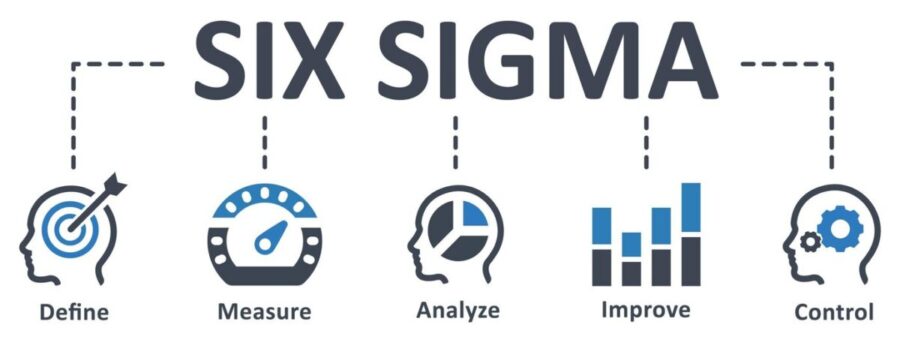When Six Sigma was first introduced in 1984, it changed quality control processes forever. This is because the methodology empowers businesses to unleash their potential by systematically identifying and eliminating inefficiencies and improving operational excellence.
Today, Six Sigma is used in global companies like Amazon, Walmart, and Toyota, helping managers supercharge product quality and productivity.
But applying Six Sigma principles requires proper planning.
This guide will explore the most critical Six Sigma principles and how to apply them to various business situations and directly address customer needs and expectations.
Understanding the 5 Important Six Sigma Principles
When it comes to Six Sigma, five principles stand out as particularly important for its successful implementation. Let’s briefly discuss each of them:
Put customers at the front of the process
The ultimate goal of Six Sigma is to satisfy customer needs and expectations. To do that, organizations must first understand how customers define quality standards and align processes to meet those standards. The customer focus drives all improvement efforts, ensuring the result adds value and drives customer retention.
Data-driven decision making
The use of data and statistical analysis is fundamental to Six Sigma. Organizations must collect and analyze relevant data to gain actionable insights. Analyzing data will help identify the root causes of issues and make informed decisions based on objective evidence. This reduces guesswork and ensures that improvement efforts are targeted, impactful, and measurable.
Continuous improvement
Six Sigma involves continuously improving and optimizing business processes. Organizations should strive to eliminate defects, reduce variations, and minimize waste throughout the product development lifecycle. Today, you can automate repetitive tasks, use Machine Learning models to detect irregularities, and use advanced software trackers to store and analyze data. Continuous improvement improves efficiency, quality, and productivity while reducing costs and cycle times.
Focus on teamwork and collaboration
Successful implementation of Six Sigma relies on collaboration and teamwork. Build cross-functional teams comprising individuals from different areas of expertise to bring diverse perspectives to problem-solving. Collaborative efforts foster a culture of knowledge sharing, creativity, and innovation, enabling organizations to tackle complex challenges effectively.
Allow flexibility
In the context of Six Sigma, ‘Be Flexible’ refers to the mindset and approach of adjusting to changing circumstances. While Six Sigma provides a structured framework, it is essential to remain flexible and agile in response to unexpected challenges, new information, and evolving business needs.
Best practices to apply Six Sigma to your organization
Now that you have understood the principles of ‘Six Sigma’, here are the top tips you can apply to drive process improvement:
- Clarify goals: Begin by defining your improvement objectives and the key metrics you will use to measure success. Whether it’s reducing defects, improving cycle times, or increasing customer satisfaction, establishing clear goals will provide a focused direction for your Six Sigma initiative.
- Follow the DMAIC Methodology: Utilize the DMAIC (Define, Measure, Analyze, Improve, Control) methodology, a core framework of Six Sigma, to guide your improvement efforts. Clearly define the problem, measure current performance, analyze data to identify root causes, implement improvements based on data-driven insights, and establish control measures to sustain over time.
- Conduct workshops: Invest in providing comprehensive Six Sigma training programs for your team members. Equip them with the necessary knowledge, skills, and tools to apply Six Sigma principles. This ensures the project teams are well-prepared and capable of driving the desired improvements.
- Actively listen to stakeholders: Following Six Sigma principles involves actively listening to the stakeholders’ feedback. This involves paying attention to their concerns, suggestions, and insights. Being responsive means considering their input and incorporating it into the improvement efforts.
- Use charts and reports: Presenting data through control charts and presentations can help stakeholders understand the initiative’s progress and detect trends that indicate an out-of-control situation. It saves time and enables better collaboration.
Real-life Business Situations Where Six Sigma Created an Impact
Six Sigma has proven to be effective across various industries. Let’s explore a few examples where Six Sigma has helped organizations achieve significant improvements:
Manufacturing and production
The biggest application of Six Sigma has been in the manufacturing and production industry. The methodology has helped companies like General Electric and Toyota to reduce defects and minimize variability. By identifying and eliminating the root causes of defects, organizations have achieved substantial cost savings, reduced scrap, and shorter cycle times for enhanced customer experience.
Supply chain and logistics
Companies like Ford and Sony use Six Sigma to optimize supply chain processes, reduce lead times, and enhance inventory management. As the supply chain is a delicate process that can have far-reaching effects on production, applying Six Sigma streamlines operations and refines processes to achieve improved order fulfillment rates, reduced transportation costs, and minimized waste.
Healthcare and Hospitals
Six Sigma has proven to enhance patient safety, improve healthcare outcomes, and optimize operational efficiency. By collecting and analyzing relevant data, healthcare organizations can identify areas for improvement, set performance targets, and implement evidence-based practices to deliver quality patient care. Consequently, Six Sigma tools such as process mapping, value stream analysis, and queue management techniques help identify bottlenecks and reduce waiting times in various healthcare settings, including emergency departments, outpatient clinics, and surgical departments.
Embrace Six Sigma For Agility
Whether it’s in manufacturing, healthcare, finance, or any other sector, Six Sigma has proven to be a game-changer for organizations to drive innovation and stay ahead in today’s competitive landscape. However, it is essential to remind ourselves that embracing Six Sigma is not just a one-time initiative but a mindset that fosters a culture of continuous improvement.
